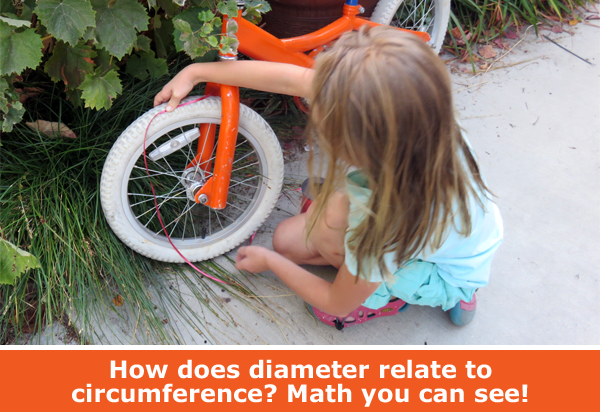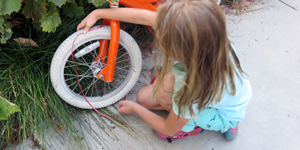Compare Circumference and Diameter with String
Log In

Things that are circular in shape surround us. From quarters to wheels to the openings of cups and bottles, circles are abundant, and they come in all sizes. In this week's family science activity, students explore properties of a circle, just like mathematicians do, to see if they can identify the relationship between the diameter of a circle and the circumference. This hands-on math activity turns these measurements (and the concept of Pi) into something that can be visualized with pieces of string as students get hands-on measuring, comparing, and figuring out the relationship. Once families decide how a diameter compares to the circumference of a single circle, it is time to try another circle and see if the same relationship is true. Is there a pattern, a formula that can be used to calculate the circumference of any circle as long as you know its diameter? Once you understand how the two values are connected, finding (or estimating) circumference of a circle makes more sense because you know how to use the diameter to help!
How does the diameter of a bicycle wheel relate to how far the bike travels with each rotation of the wheel? As an extension of this activity, you can put the question to the test and find out!
- Circular Reasoning: Finding Pi (science activity at Scientific American)
Continue the Numbers Fun!
If you and your family enjoyed this math-based science activity, you may also enjoy activities and posts like these:
- Family Math: M&M Color Statistics
- Candy Corn Geodesic Dome
- Making Math with Dough: Weekly Science Activity
- Probability and Playing Cards: Hands-on Family Math
- M&M Math
- Making Room for Math
Categories:
You Might Also Enjoy These Related Posts:
- 15 STEM Gifts & Science Kits You'll Feel Good About Giving
- 13 Boat Science and Submarine Science Projects and Experiments
- July 4th STEM! Summer Science Picks for Independence Day!
- 12 Science Kits for Summer Science Experiments and Discovery
- 15 Science Projects to Make and Give for Father's Day
- Ready, Set, Go! (Awesome Summer Science Experiments)
- Awesome Summer Science Experiments
- 10 STEM Activities with Cardboard Tubes
Explore Our Science Videos
Toy Sailboat with Keel
Slow Motion Craters - STEM Activity
Make a Homemade Fly Trap










